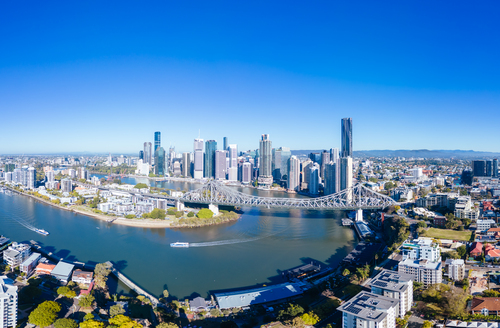Friday, 12 January 2018
457, RSMS and ENS visa News | Partner Visa News | Australia Immigration Department News | State Sponsorship News | Citizenship | English Requirements News

Welcome to 2018! The year of 2017 had the most changes and announcements on Immigration Policy that I can remember. Here is our recap of the significant changes to the migration programme for Australia in 2017 and some of the discussions and ongoing developments for 2018.
The Immigration News in 2017 has been dominated by the announcements in April 2017 regarding the 457 and skilled occupation list changes and the proposed changes to Australian Citizenship application requirements.
The planning levels for permanent visas continue to be significant, at 190,000 permanent visas to be granted. The planning levels control the numbers of Australian permanent visas that are granted each year. If application numbers exceed planning levels, expect a longer processing time for your visa application.
I am going to make comments below about news in relation to a wide range of visas including business, skilled, visitor and family visas.
Relevant News and Updates for specific visa categories

Employer Sponsored visas – subclass 457, 186 ENS, 187 RSMS and Soon the New TSS Visa
457 Visa
There have been many major changes to the 457 visa in 2017.
On 19 April 2017 Prime Minister Malcolm Turnbull announced that the 457 visa programme will be abolished. The announcement had the effect of causing a great deal of confusion for those holding a 457 visa and those wanting to apply for one.
The 457 visa will stop being granted from March 2018. From March 2018 a new temporary work visa called the Temporary Skills Shortage (TSS) visa will start being granted.
Much of the TSS Criteria will be announced by the Department of Home Affairs (DHA) in the next two months.
The 457 occupation list was cut in April 2017 then changed again in July 2017.
Additional changes to the 457 visa programme include:
- From 1 July 2017 onwards Character requirements have required the provision of penal clearance certificates became mandatory.
- The English Exemption for nominated positions with annual salary over A$ 96,400 was removed.
The processing times for 457 visas vary greatly due to a number of factors, such as:
- if the employer is an accredited sponsor (faster processing)
- if you gain priority processing by meeting criteria including being regional or having a major project (faster processing)
- if you receive the standard processing times (slower processing).
The quoted processing times of the DHA site at the time of writing are:
- 75 per cent of applications processed in 88 days
- 90 per cent of applications processed in 8 months
Going forward you are advised to submit strong and substantial applications for the 457 visa, or the new TSS visa in the coming year.
We will be doing a separate article on the requirements for the TSS Visa once additional details are available from the DHA. While some general requirements have been announced, many details are still yet to be made clear by the DHA.
Here is an article on how the new TSS visa may affect existing 457 holders.
https://www.workvisalawyers.com.au/news/all/the-temporary-skills-shortage-tss-visa-will-begin-march-2018-what-does-it-mean-for-457-visa-holders.html
RSMS Visa
The RSMS occupation list was not affected when the 457, ENS 186 and 189, 190 and 489 occupation lists were cut.
This means that at the present time the RSMS has the most generous list, with over 600 occupations available for application, many of which are only on the RSMS list.
Perth was removed from the regional area classification in 2017.
With changes likely to be announced for the RSMS 187 visa in March 2018, including a reviewed list which will likely be much shorter, I expect very strong demand for the RSMS 187 visa in the first two months of 2018.
In late 2017 the Department’s Procedure Advice Manual for the RSMS has been updated to put more scrutiny on the visa applicant’s skills where the person has achieved a qualification through RPL. The Procedure Advice Manual now states:
“Case officers may encounter scenarios where a visa applicant has obtained a qualification in Australia while they were the holder of a temporary visa. In these instances, and before determining that applicants satisfy Regulation 187.234(c) on that basis, a greater level of scrutiny is to be applied to the Registered Training Organisation (RTO), the course content, and the nature of the assessment items. Please note that such courses do not include those for which a student visa was granted.”
Negative changes to the RSMS from March 2018 include:
- Minimum market salary rate: Employers must pay the Australian market salary rate and meet the Temporary Skilled Migration Income Threshold, set at A$ 53,900 as of 12 April 2016.
- Residency: The eligibility period to transition to permanent residence will be extended from two to three years.
- Work experience: At least three years’ work experience relevant to the particular occupation will be required.
- Age: All applicants must be under the maximum age requirement of 45 at the time of application.
- Training requirement: Employers nominating a worker for an ENS or RSMS visa will be required to pay a contribution to the Skilling Australians Fund (payable for each nominated worker).
- The contribution will be:
o payable in full at the time each worker is nominated.
o A$ 3,000 for small businesses (those with annual turnover of less than $10 million) and A$ 5,000 for other businesses.
ENS 186 Visas
The ENS was hit this year through the reduced list.
In 2018, access to the ENS may be further restricted, with the ability to do Temporary Transition for the TSS visa holders to be available only for MLTSSL occupations.
Processing Times for permanent employer sponsored visas
The processing times have become much longer for ENS 186 and RSMS 187 in 2017.
The processing times at the time of writing this article are:
| Subclass of visa | Stream of visa | 75% of applications processed | 95% of applications processed |
| 186 Employer Nomination Scheme | Direct Entry | 12 Months | 16 Months |
| 186 Employer Nomination Scheme | Temporary Residence Transition | 8 Months | 10 Months |
| 187 Regional Sponsored Migration Scheme | Temporary Residence Transition | 8 Months | 10 Months |
| 187 Regional Sponsored Migration Scheme | Direct Entry | 17 Months | 19 Months |
Comment:
If the aim of employer sponsored applications is to fill skills shortages, then the question of “how many employers can wait for up to 2 years?” needs to be asked.
Sources:
Fact sheet two: Reforms to Australia’s permanent skilled migration program
https://www.homeaffairs.gov.au/WorkinginAustralia/Documents/reforms-australia-permanent-employer-sponsored-migration-programme.pdf
Specialist Short Stay 400 and Temporary Activity 408 visas
There has been a large increase in the interest for the 400 visa. This visa is only for short stays and specialist work activities that cannot be filled by Australian Citizens and Permanent Residents. The advantages of the 400 visa include:
- No English requirements
- No need for formal sponsorship (employer approval) and also no sponsor obligations
- No need for police clearances
The 408 remains important because it has activities that are not suited or sometimes not included on the 457 occupation list. The 408 visa will be suitable for short-term activities including Entertainment, Sports and Religious Workers.
General Skilled Migration (GSM) visas – subclass 189, 190, 489 and 485
The announcement of occupation list changes from 19 April 2017 had a significant effect upon the GSM visas. The fact that the changes were described as abolishing the 457 visa programme meant that the GSM changes were rather overshadowed.
Skilled Occupation List changes:
A number of bioscience related occupations were removed from the occupation list in April 2017, only to be returned to the list after strong lobbying by the industry, in July 2017.
New skilled occupation lists were introduced being:
- The Consolidated Sponsored Occupation List (CSOL) has been renamed the new Short-term Skilled Occupations List (STSOL). DHA says this list contains occupations required to meet critical, short-term skills needs.
- The other occupation list used for skilled migration, the Skilled Occupations List (SOL) was renamed the new Medium and Long-term Strategic Skills List (MLTSSL). DHA says this list contains occupations that have been assessed as being of high value to the Australian economy and aligning to the Government’s longer term training and workforce strategies.
Higher points:
The SkillSelect points requirements for skilled independent 189 and skilled regional sponsored (relative) 489 visas have been climbing during the year of 2017.
The latest available SkillSelect results show that 75 points was required for an invitation for the 189 visa and 85 points for the 489 visa (relative sponsored). https://www.workvisalawyers.com.au/news/all/85-points-required-for-subclass-489-skilled-regional-sponsored-visas.html
The challenges have continued this year for commerce/business graduates who are planning to apply for visas as an Accountant. The points required for Accountants climbed from 70 to 75 points in 2017. This is proving difficult for many graduates, who even with completing a professional year for an extra 5 points, might still not have enough to obtain an invitation.
The 485 Graduate Work Stream is continuing to be very popular and provide between two to four years of residency and work rights in Australia after graduation. This popularity is set to continue with student visa numbers rising.
Further reading:
https://www.workvisalawyers.com.au/news/all/new-skilled-occupation-lists-explained-there-are-now-different-mltssl-and-stsol-for-different-visa-programmes.html
Business Innovation and Investment Program (BIIP) Visas
There are a large number of visa options available under this program.
While there are still a number of new applications in the Significant Investor Visa (SIV), the overall number of applications is much lower since the change in July 2015 that requires A$ 500,000 to go into venture capital and high growth equity funds.
The Entrepreneur visa (referred also as the 188E visa) was introduced in September 2016 and has turned out to be a dud, with only one visa applied for so far. This is due to the funding requirements being through third parties being unachievable.
In 2018 I have seen a continued growth in interest for two types of visa:
- the Business Talent Significant Business History Stream subclass 132 which is a single stage, straight to PR visa. The criteria include applicants actively managing a business which they have a required level of ownership, and where the annual turnover is at least A$ 3,000,000. The applicant and partner will also need a combined personal and business assets value of at least A$ 1,500,000.
- the Business (Investor stream) visa, also known as the 188B, which requires a recent history of managing investments or business, total assets of over A$ 2,250,000, and the ability to invest A$ 1,500,000 in State/Territory Government bonds. This is seen by some applicants to be a lower risk and less effort pathway to PR than the 188A which involves buying or establishing and actively managing an Australian business.
There is an opportunity for genuine Entrepreneurs to pursue an Australian visa through the Venture Capital Entrepreneurs Stream of the 132 visa. The 132 visa grants permanent residency and this is a big advantage over the two-staged 188 visa to 888 visa pathway.
A business operating in this space with experience in the Venture Capital Entrepreneurs Stream 132 visa is Southmore Capital. https://www.southmore.com.au/
Possible changes in 2018: In 2017 the DIBP was undertaking a Review of Australia’s business, investment and talent visas. This involved the opportunity for Stakeholders such as AUSTRADE and the Migration Institute of Australia (MIA) to make submissions.
The findings of the review should be released in 2018 and then it is possible that changes could be made to the Business Innovation and Investor Program.
Further Reading:
https://www.smartcompany.com.au/startupsmart/news-analysis/entrepreneur-visa-only-one-applicant-in-12-months/#.WixlAwW1TK8.twitter
https://www.austrade.gov.au/international/invest/guide-to-investing/coming-to-australia/significant-and-premium-investor-programs/cifreview
Student subclass 500 and Student Graduate subclass 485 Visas
There was an increased number of student visas granted in 2017.
Here are some information from the ‘Student visa and Temporary Graduate visa programme bi-annual report ending at 30 June 2017’ on student visa numbers.
“There were 343,035 student visas granted in 2016-17– an increase of 10.4 per cent compared with the same period last year.”
“As at 30 June 2017, there were 443,798 student visa holders in Australia. Over one third of students in Australia at 30 June 2017 were from China (23.5 per cent) or India (13.4 per cent).”
“Lodgements for the Temporary Graduate (subclass 485) visa increased by 26.2 per cent in the 2016-17 programme year to 30 June 2017 when compared with the same period last year, as a greater number of students in Australia became eligible to meet the requirements for the Post-Study Work stream.”
“On 30 June 2017, there were 443,798 student visa holders in Australia. This is an increase of 10.6 per cent when compared to the number of student visa holders in Australia at 30 June 2016. This is the highest recorded number of student visa holders in Australia on 30 June.”
Comments:
There is still a significant rate of refusal of student visa applications, from what I have seen from those contacting me. The Department has refused many visas based on their findings that the Genuine Temporary Entrant (GTE) criteria have not been met.
Most states and territories have increased their number of international students. WA is the anomaly, where the number of applications seems to be falling. This may be due to the cuts to the WA skilled occupation lists for state sponsorship meaning student visa applicants are choosing courses in other states and territories, in hopes of better chances to obtain state/territory sponsorship thereafter.
The DHA has recently sent an email to all RMAs stating that all documents for a student visa application must be attached upfront. The email dated 4 January 2018 reads:
“The Department can make a decision on a student visa application with the information provided, there is no requirement to request for more information.”
Sources and further reading:
Student visa and Temporary Graduate visa programme bi-annual report ending at 30 June 2017
https://www.homeaffairs.gov.au/ReportsandPublications/Documents/statistics/student-temp-grad-programme-report-jun-2017.pdf
Family visas – Partner, Parent – subclass 309/100, 820/801, 103, 143, 173, 101/802
Partner Applications:
Partner visa applications continue to be in very high demand.
The reasons for this are many including the following, which all contribute to the opportunity for Australian Citizens or PR holders to get in contact with and start relationships with overseas nationals:-
- Increasing international student numbers in Australia
- Increasing student graduate holders staying in Australia post study
- Higher tourist visa numbers
- Continued high levels of work and holiday visa holders
- Information technology contributing to making it easier to meet people from overseas
- High levels of travel by Australians to overseas
Increased Sponsorship requirements including police clearances for all sponsors were also announced.
Changes in 2018:
Expect further changes for Partner visas in 2018.
The Government intends to make sponsorship approval a separate step that must be approved prior to a Partner visa application being lodged. This has the potential to further slow down the partner visa application process. The relevant Bill is the Migration Amendment (Family Violence and Other Measures) Bill 2016, and the proposed section 140AA (3) is to establish the pre-approval of sponsors.
Processing times blew out in a major way in 2017 for Partner Visas, with current processing times for onshore applications quoted as:
| 820 Partner | 20 Months – 75% of applications decided | 25 Months - 95% of applications decided |
http://parlinfo.aph.gov.au/parlInfo/download/legislation/bills/r5647_first-reps/toc_pdf/16052b01.pdf;fileType=application%2Fpdf
Further Reading:
https://www.workvisalawyers.com.au/news/all/changes-for-the-australia-partner-visa-application-separate-sponsorship-application-and-possibly-more.html
Parent Visas:
The processing times for Contributory Parent Visas have blown out further.
| 143 Contributory Parent (Migrant) | 37 Months– 75% of applications decided | 39 Months - 95% of applications decided. |
This is a major concern for those with applications lodged and in the pipeline. Parent visa applicants must meet the health criteria at the time of decision. So if processing takes a number of years, then more applicants will develop health conditions and then be refused.
Further, the Contributory Parent visa has the highest visa application charge, with the second instalment being A$ 43,600. This contribution payment is a lot to pay for a trend of poorer service by the DHA.
The proposed longer duration (5 years) temporary parent visa failed to pass in 2017. However the changes have been held up by the Migration Amendment (Family Violence and Other Measures) Bill 2016.
Sources:
https://www.sbs.com.au/yourlanguage/hindi/en/article/2017/11/09/temporary-sponsored-parent-visa-yet-pass-senate
Australian Citizenship
On 20 April 2017 the Australian Department of Immigration and Border Protection (DIBP) – now Department of Home Affairs (DHA), announced that changes were to be introduced to the Australian citizenship requirements. The proposed changes for applications included:
- Increased permanent residency requirements (from one year to four)
- Meeting an English requirement of competent English
On 18 October 2017, the Bill was struck down and thus the new requirements will not be implemented, at least for the time being.
The announcement of changes and then subsequent failure of the changes to pass, resulted in a large increase in Australian Citizenship applications from 18 October 2017 onwards.
The Government has announced intentions to bring in new Citizenship changes from 1 July 2018.
The current criteria for Australian Citizenship by conferral include:
- Be a resident of Australia for the 4 years leading up to application, with a total of no more than 365 days outside Australia in that time, and
- Be a permanent resident of Australia for the year leading up to application, with a total of no more than 90 days outside Australia in that time.
- Be of good character
- Have an ongoing intention to reside in Australia
- increasing the general residence requirement, which means applicants for Australian citizenship will need to have a minimum of four years permanent residence immediately prior to their application for citizenship with no more than one year spent outside Australia during that period
- completing a separate English language test, where applicants will need to demonstrate English language listening, speaking, reading and writing skills at the modest level before applying for citizenship by conferral
- strengthening the Australian values statement to include reference to allegiance to Australia and requiring applicants to undertake to integrate into and contribute to the Australian community
- strengthening the test for Australian citizenship through the addition of new test questions about Australian values and the privileges and responsibilities of Australian citizenship
- a requirement for applicants to demonstrate their integration into the Australian community
- strengthening the pledge to refer to allegiance to Australia, and extending the requirement to make the pledge to applicants aged 16 years and over for all streams of citizenship by application, including citizenship by descent, adoption and resumption.
The processing times for Australian Citizenship by conferral really blew out in 2017. They were approximately 3-6 months in 2016. At the current time they are quoted by DHA as:
| Australian Citizenship application type | 75% of applications processed in | 90% of applications processed in |
| Conferral (lodgement to ceremony**) | 12 months | 14 months |
https://www.workvisalawyers.com.au/news/all/australia-citizenship-news-and-update-now-is-the-time-to-apply-for-your-australian-citizenship.html
https://www.homeaffairs.gov.au/Trav/Citi/whats-new
Visa cancellation statistics
The number of cases for visa cancellation has been on the rise with the step-up in monitoring and integrity checks by the DIBP. Visa cancellations have been on the rise since the Migration Amendment (Character and General Visa Cancellation) Bill 2014 was introduced.
| 2013-14 | 2014-15 | 2015-16 | 2016-17 | |
| Visa Cancellations due to character reasons | 76 | 580 | 983 | 1284 |
As illustrated the visa cancellation numbers have increased significantly since 2014.
Had your visa application refused or your visa cancelled? Work Visa Lawyers may be able to help. Contact us at This email address is being protected from spambots. You need JavaScript enabled to view it. to discuss.
Seeking migration advice immediately is very important in helping you deal with a visa application refusal or visa cancellation.
Appeals through the AAT
The AAT is an independent review body that can review administrative decisions including visa refusals under the Migration Act.
The AAT was hit with major changes in 2017. Many members were not reappointed. Then approximately 60 new members were appointed.
In 2017 the AAT increased the number of oral decisions made on the day.
The AAT increased the number of batched reviews, where a number of similar matters are heard in a row. I have heard of reviews that went for about 10 minutes before an oral decision.
If a review applicant is not successful with in an AAT appeal, they have the option to apply for judicial review.
Sources:
http://www.smh.com.au/federal-politics/political-news/george-brandis-clears-out-infuriating-tribunal-20170628-gx071l.html
The numbers - Migration Programme Planning Levels
For Australia’s migration programme the Department announces a planning level for each year. For the 2017-18 Migration Programme, the planning levels have been set at up to 190,000 places, the same as for the previous year 2016-17.
The breakdown of the 190,000 places is as follows:
- 128,550 places for skilled migration (67.66%)
- 57,400 for family migration (30.21%)
- 565 for migration under the Special Eligibility stream of the managed Migration Program
- Employer Sponsored visas
- subclass 187 Regional Sponsored Migration Scheme (RSMS) visa
- subclass 186 Employer Nomination Scheme (ENS) visa
- General Skilled Migration (GSM) visas
- subclass 189 Skilled Independent visa
- subclass 190 Skilled Nominated visa
- subclass 489 Skilled Regional Sponsored visa
- Business Innovation and Investment visas
- subclass 188 Business Innovation and Investment (Provisional) visa
- subclass 888 Business Innovation and Investment (Permanent) visa
- subclass 132 Business Talent visa
- subclass 124/858 Distinguished Talent visas
Changes to the Department and its processes in 2018
There have been a number of changes to the Department including a name change from the Department of Immigration and Border Protection (DIBP) to the Department of Home Affairs (DHA).
The Department has been moving towards more streamlined processes for visa applications. This includes for a number of visas including 457 visas and student visas, refusing applications that they believe the required information has not been supplied, without making any request for further information.
There is a push to provide minimal information and counter service at the Department of Immigration offices around Australia.
There is the ongoing visa simplification process, where the number of visa subclasses is being reduced from over 100 visas to the target total of 10.
This has been successful in some areas, such as with putting all student visa applications under the one subclass - the subclass 500 Student Visa.
However, the Streamlining could be argued to have caused more confusion in other areas, for example where a number of visas have been squeezed into the subclass 408 Temporary Activity visa, which now has ten different activity types.
There are some bigger changes to come to the Immigration section of the DHA.
There is also the aim of removing the straight to PR options, so that all migrants go through a temporary visa stage. It seems that the underlying motivation for this may be to give the DHA more time to montitor the behaviour of visa holders, and cancel the visas and deport those who are not wanted.
Combining the effects of the proposals in provisional visas and longer Australian Citizenship.
So how much time will it take under the proposed changes to become an Australian Citizen?
- Appling for the original provisional visa likely to take at least 6 months processing.
- Then if successful, holding a four year provisional visa.
- Then applying for PR likely to take 6 months processing.
- Then holding PR for at least four years prior to applying for Australian Citizenship.
- Then a processing time of approximately a year for Australian Citizenship.
The overall process of first deciding to migrate to Australia to becoming an Australian Citizen may take ten years.
https://www.y-axis.com/news/australian-immigration-transforms-2018-tss-visa-job-lists-interim-pr-visas/
Outsourcing offshore and to robots:
In 2017 the DIBP (now the DHA) released a Request for Expression of Interest (REOI), starting the process of seeking external parties to assist with visa processing in the future.
Here is a quote from First Assistant Secretary, Andrew Kefford's transcript from the Sydney Industry Briefing:
“Following extensive market consultation, we have released a Request for Expression of Interest for market providers to work collaboratively with us to design, implement and operate a Global Digital Platform that will underpin Australia’s new visa business.”
This is not just outsourcing to lower cost countries, but is also looking for greater automation through technology.
There is significant debate that will continue in relation to any outsourcing of the Immigration process to third parties, that are not the Australian Government and that may not be based in Australia:
- There are the potential benefits of costs saving to the Australian government and also the process of more automation making the amount of information available to government and that can be shared with different parts of the government, much greater.
- The negatives include:
- The risk to Australian security and sovereignty posed by offshoring immigration functions.
- Loss of Australian jobs to automation and also to offshore companies.
- Potential for lower standards to be applied to immigration applications.
Comments:
The rise of automation through technology, or rise of the robots, appears to be gaining pace in the DHA.
Further Reading:
http://www.canberratimes.com.au/national/public-service/immigration-department-moves-to-outsource-visa-system-to-avoid-cost-blowouts-20170712-gx9mo2.html
https://www.homeaffairs.gov.au/Visasupport/Documents/industry-briefing-transcript-andrew-kefford.pdf
Take Away points for Australian Immigration and Citizenship in 2018
The DHA will be looking to refuse applications without requesting further documents in student, 457 and then TSS visa and Partner applications.
From March 2018 negative changes to the RSMS 187 including cutting the occupations list, applying TSMIT salary of A$ 53,900 or higher, and making employers pay towards the Skilling Australian Fund.
From March 2018 negative changes to the ENS 186 include making employers pay the Skilling Australian Fund.
From March 2018 the new TSS visa will be introduced, and the 457 will no longer be granted. The new TSS will require employers to pay the Skilling Australian Fund for every nomination. There will be limits to applying for PR from the TSS.
From 1 July 2018, potentially higher Australian Citizenship requirements including an English Test and four years residency as a PR holder may come into effect.
Some time in 2018:
- The Business Innovation and Investor Program (BIIP) Visa program may be changed to reduce the number of visas categories.
- Expect further changes for Partner visas which could include a separate Sponsorship application being required prior to the visa being lodged.
If you notice other changes that I have missed, please email me at This email address is being protected from spambots. You need JavaScript enabled to view it. and I will do a further Blog to explain.
Blog written by Chris Johnston, Lawyer and RMA, Principal of Work Visa Lawyers.
This information is accurate on 12 January 2018.
Do you need help with an Australian visa application?
At Work Visa Lawyers we are experienced in assisting applicants in all matters relating to Australian visa applications. Our areas of expertise include Skilled Migration visas, Business Skills Migration visas, Employer Sponsored Work Visas, Partner and other Family Migration visas as well as the Administrative Appeals Tribunal (AAT) Review, Judicial Review and Ministerial Intervention.
If you require further information regarding your Australia visa options you can contact us through:
(08) 8351 9956 or +61 8 8351 9956
or This email address is being protected from spambots. You need JavaScript enabled to view it.








